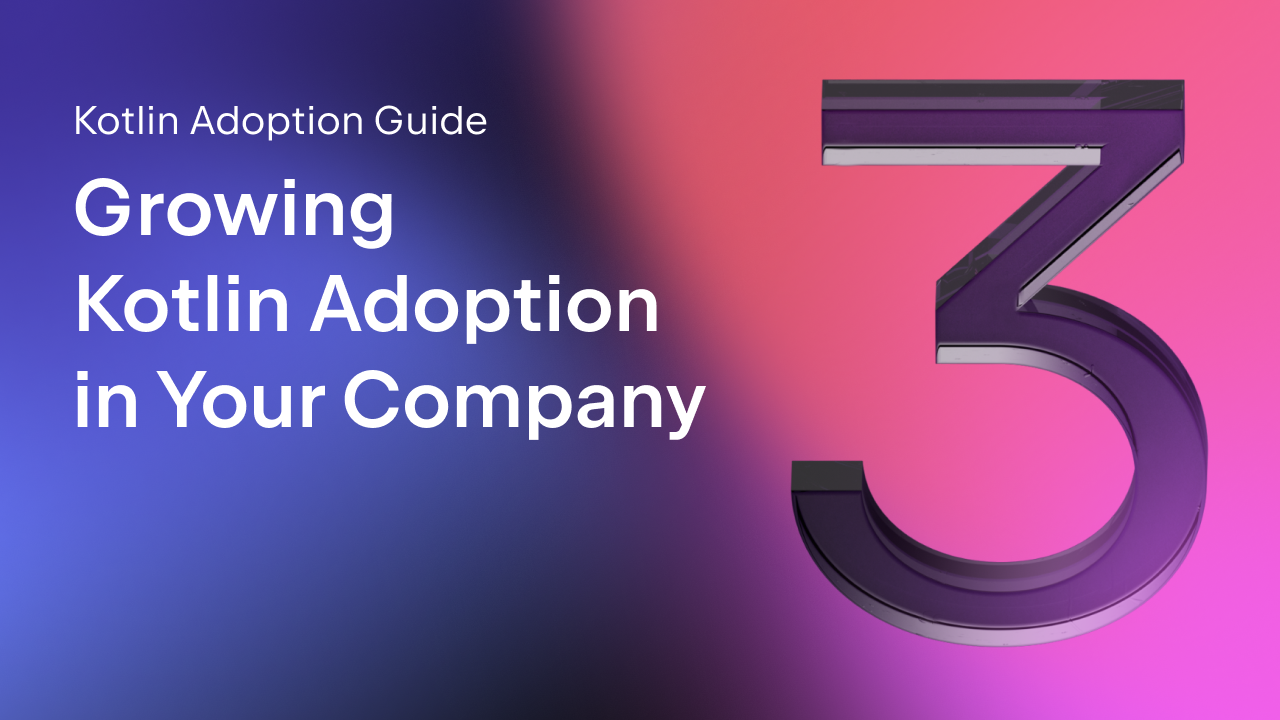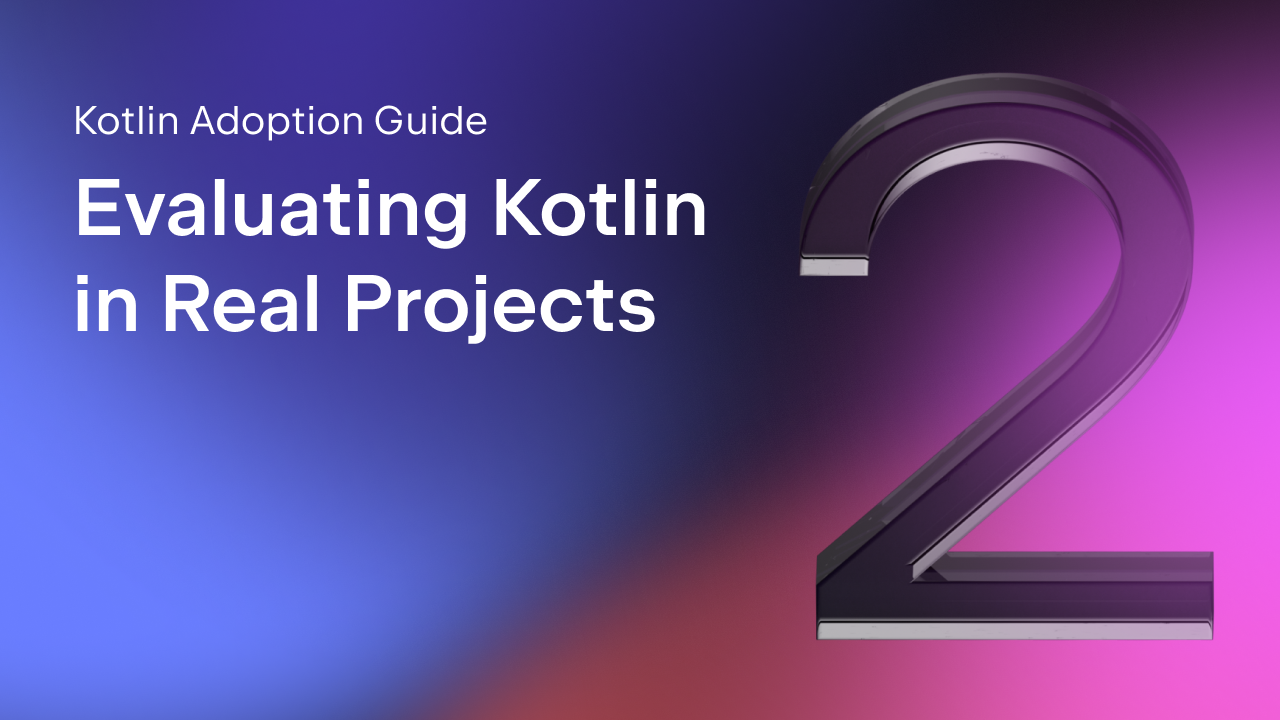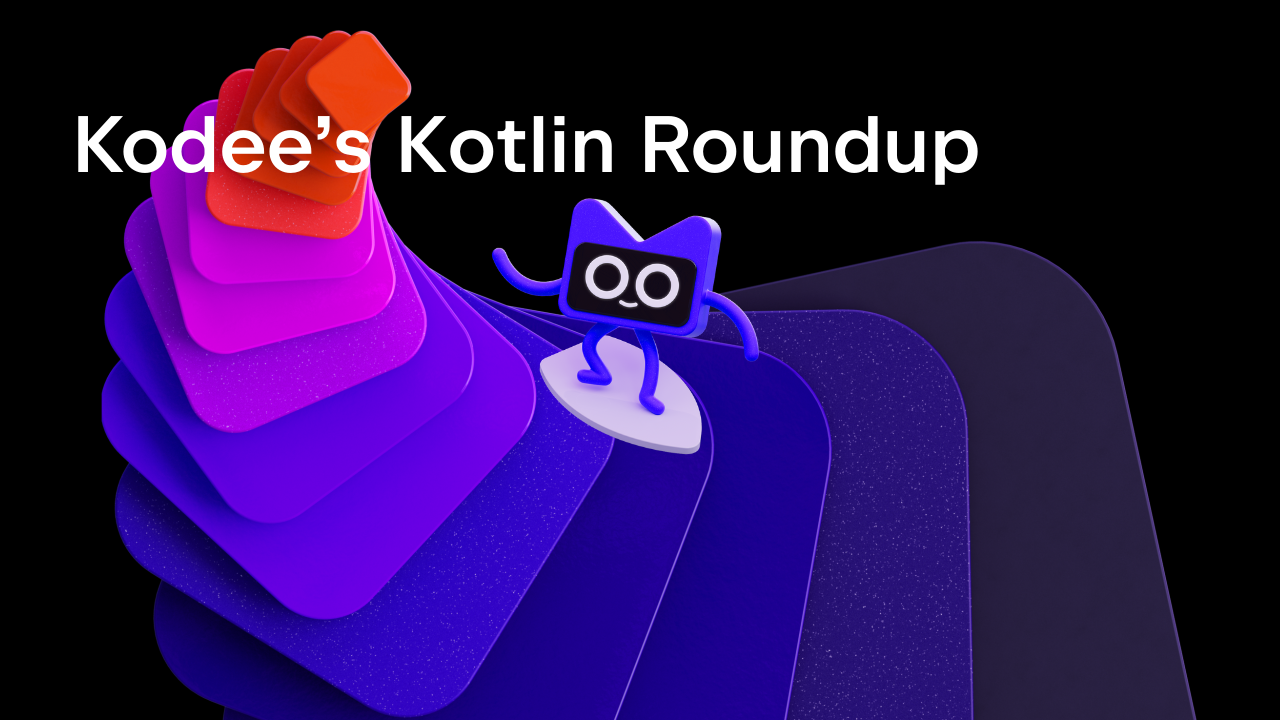Kotlin
A concise multiplatform language developed by JetBrains
Helping Decision‑Makers Say Yes to Kotlin
Guest post by Urs Peter, Senior Software Engineer and JetBrains-certified Kotlin Trainer. For readers who’d like a more structured way to build Kotlin skills, Urs also leads the Kotlin Upskill Program at Xebia Academy.
This is the fourth post in The Ultimate Guide to Successfully Adopting Kotlin in a Java-Dominated Environment, a series that follows how Kotlin adoption grows among real teams, from a single developer’s curiosity to company-wide transformation.
All parts in the series:
- Getting Started With Kotlin for Java Developers
- Evaluating Kotlin in Real Projects
- Growing Kotlin Adoption in Your Company
Persuading Management: Building the Business Case for Kotlin
Once you have achieved a critical mass of Kotlin supporters, presenting a compelling business case to management requires moving beyond code demonstrations to hard data and strategic considerations.
Market momentum and industry validation
Kotlin has demonstrated remarkable growth, with 2.5 million developers worldwide now using the language. This represents sustained adoption since Google’s pivotal 2017 announcement declaring Kotlin the official language for Android development, followed by Spring Boot’s embrace of Kotlin as a first-class citizen.
Source: Keynote KotlinConf 2025
The momentum has accelerated significantly. Spring Boot, which commands approximately 90% of the backend market share, formalized a strategic partnership with JetBrains in 2025 – a clear signal of Kotlin’s enterprise viability and long-term trajectory.
Framing the strategic decision
While these adoption metrics demonstrate Kotlin’s market validation, management decisions require a comprehensive cost-benefit analysis. Technology adoption at scale involves significant investments in training, tooling, and potential migration efforts. The key is presenting both the tangible benefits and realistic implementation costs, allowing leadership to make an informed strategic decision rather than a purely technical one.
The business gains unlocked by embracing Kotlin
These are the business gains when choosing Kotlin:
| Advantage | Details | Business/Team impact |
| ~30% less code. Better code clarity. | ~30% less to write, read, fix, and maintain. | ➜ Increased productivity. ➜ Improved maintainability. |
| 25% fewer bugs thanks to safety features | Kotlin reduces defects out of the box – no extra skills required – through features like null safety, safe APIs, and sensible defaults. | ➜ Better quality – happier customers and developers. ➜ More time for new features. ➜ Faster time-to-market. |
| Invest in just one new language: Kotlin | Keep existing frameworks (e.g. SpringBoot, Micronaut, Quarkus). | ➜ Framework knowledge is preserved. |
| Better choice for AI | Kotlin is more AI-friendly due to noise reduction, clarity, fluency, and more, which aligns with how LLMs process code. | ➜ Better productivity with AI, which is increasingly influencing coding. |
| Fully interoperable with Java | Kotlin is fully interoperable with Java; no rewrite of libraries required. | ➜ Investments based on Java are preserved. |
| Well supported | Backed by strong players: JetBrains, Google, and Meta. | ➜ Future-proof choice. |
| Gradual adoption | Kotlin supports incremental migration paths. | ➜ No “Big Bang” needed. |
| Increase in developer happiness | In surveys and studies, Kotlin developers consistently report better developer experience and higher job satisfaction. | ➜ Attract new developers. ➜ Better retention 😃😃😃. |
| Faster audit, safer compliance | Kotlin’s type safety, immutability, and clear data structures make systems easier to trace, validate, and certify. These qualities support transparent and reliable software processes across regulated domains. For a real-world example, see Kotlin in Payment Gateways and Fintech: A Strategic Fit for 2026 Architectures. | ➜ Easier internal and external audits. ➜ Lower compliance effort and risk. ➜ Greater organizational transparency. |
Some words on developer happiness
Looking at my career, I was greatly rewarded for letting go of my attachment to the seemingly safe career choice of Java. Daily, I’m empowered with a language that is a joy to work with and helps me express what I want to achieve in the best possible way, concisely, safely, and productively.
It’s a fact that, personally, I’ve become a happier developer (human ;-)?) using Kotlin. Though this is subjective, developer satisfaction data tells the same unmistakable story:
Backend developers who migrate from Java to Kotlin report dramatically higher happiness levels across every major industry survey.
- Stack Overflow’s Developer Survey data shows Kotlin consistently ranking among the top five most loved languages at ~63% satisfaction, significantly outpacing Java’s ~54% rating.
- The Mercedes-Benz.io backend team documented “significantly more concise code than Java, reducing boilerplate and improving readability” while achieving measurable productivity gains in their microservices architecture.
- Tyler Russell, a backend developer with 15 years of Java experience, reports after four years with Kotlin: “I really like Kotlin… it feels like it enables productivity significantly more than it hinders it”, and never wants to return to Java.
Corporate Kotlin to Java backend migrations demonstrate that these happiness improvements scale effectively across enterprise environments.
- N26’s backend engineering team converted 60% of their microservices to Kotlin within two years, reporting enhanced developer satisfaction and reduced production issues.
- ING’s five-year backend adoption journey shows sustained organic growth, with 8% of their 20,000+ technical staff repositories now using Kotlin, demonstrating that developers voluntarily choose Kotlin when given the option.
The cost / return on investment of embracing Kotlin:
These are the investments required for choosing Kotlin.
| Investment | Description | Expected Return / Impact |
| Developer training | Training sessions, workshops, and onboarding materials. | ➜ Experienced developers new to Kotlin are productive in 2–3 weeks. ➜ ROI in ~1–4 months. |
| Codebase migration (if applicable) | A gradual rewrite or a mixed Kotlin/Java code setup strategy is required. | ➜ No need for big bang rewrite ➜ Maintains delivery speed. |
| Knowledge sharing | Internal Kotlin champions, brown bag sessions, shared repos with examples. | ➜ Faster team-wide adoption. ➜ Reuse of best practices. |
| Hiring / upskilling | Hire Kotlin-experienced devs or upskill existing Java devs. | ➜ Higher retention. ➜ Broader talent pool. |
One of the most common concerns when considering Kotlin adoption is the perceived shortage of experienced Kotlin developers. But rather than a roadblock, this can be a strategic advantage:
- ✅ Fast upskilling for Java developers
Kotlin is designed to be intuitive for Java developers. With the right guidance, most can become productive in just 2–3 weeks. - ✅ Kotlin attracts high-quality developers
Those who actively pursue Kotlin are often curious, modern, and quality-driven – traits you want in your engineering team. - ✅ Kotlin enhances your company image
Adopting Kotlin signals that you embrace modern, forward-looking technology, which helps attract top-tier talent. - ✅ Kotlin boosts developer happiness and retention
Kotlin developers consistently report higher job satisfaction, making it easier to retain engaged and motivated team members.
In short: Kotlin isn’t just a smart tech choice – it’s a strategic people decision.
Up next in the series
We shift focus from convincing developers to persuading decision-makers. The next post shows how to build a compelling business case for Kotlin adoption, grounded in real data and measurable outcomes. You’ll learn how to translate developer wins into management arguments, link productivity gains to cost savings, and demonstrate why Kotlin is more than a technical upgrade – it’s a strategic move for teams and companies alike.
Subscribe to Kotlin Blog updates









